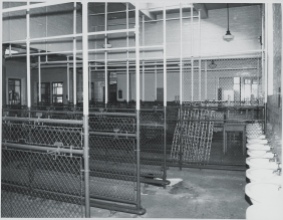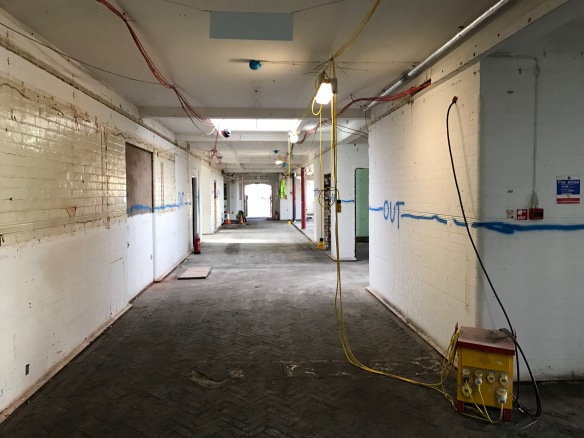This week we’ve been doing a bit of time travelling, journeying between the present and the 1970s when our building reached the end of its days as Kingsholm School. It’s been a low budget trip as we haven’t needed a TARDIS or the Time Lords’ other advanced technology. Instead, our trusty time portal has been some perfectly preserved photos that are in our collections, which means you can enjoy the tour too!
Cloakroom area then research room; the entrance to the new Heritage Hub will be on the right.
Gym then strongroom for outsize items; the wall to the left will be removed to create a flexible volunteer workspace that links to the new research room.
This area is soon to become the new Archives research room; most of the internal walls will be removed to create it. The right hand wall behind the red fire extinguisher is the other side of the wall on the left in the images immediately above.
More school day clues: playground tarmac under the concrete footing, an inkwell and marbles.
And finally the most up to the minute news: the tell-tale photo below shows the Horsa (hut) featured in last week’s post has finally bolted and we’re ‘ready for the off’ with works to lay the foundations of our new strongrooms!

Come back next week for another update.

Jill Shonk
Access & Learning Leader

























